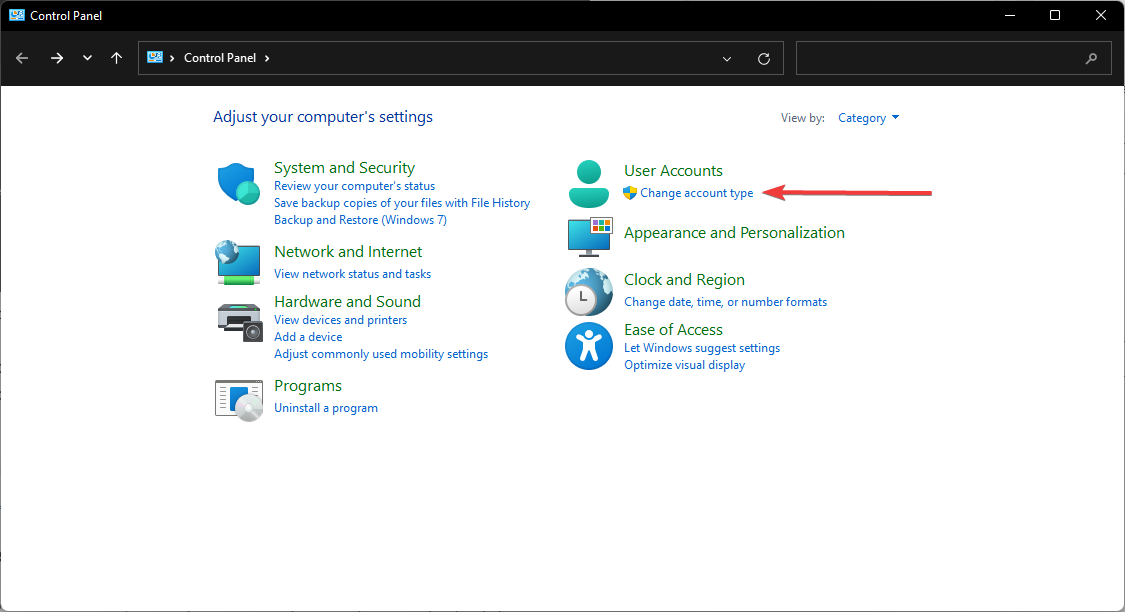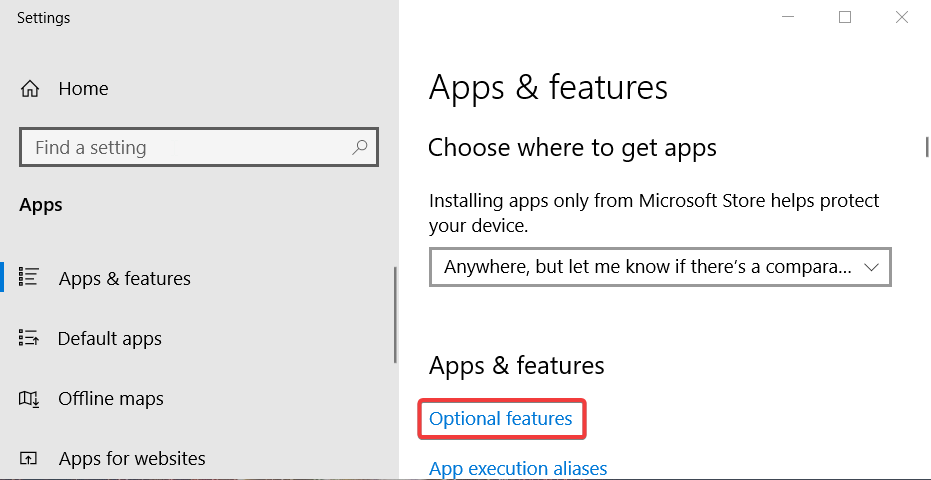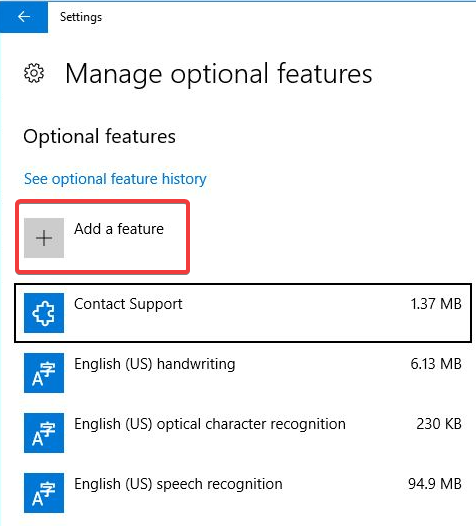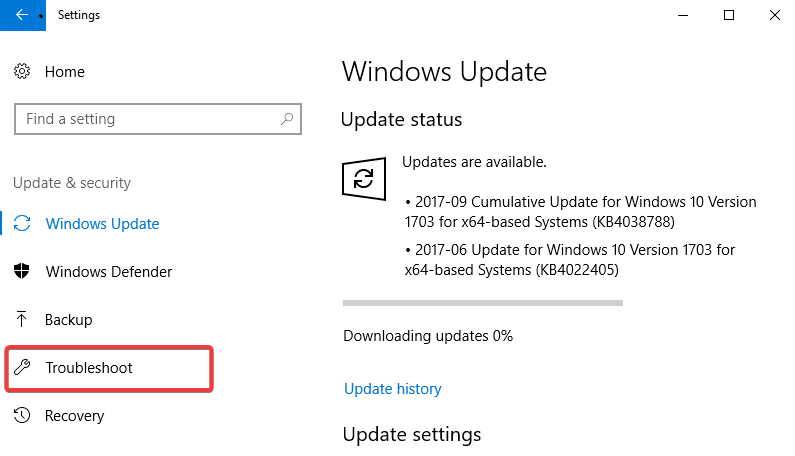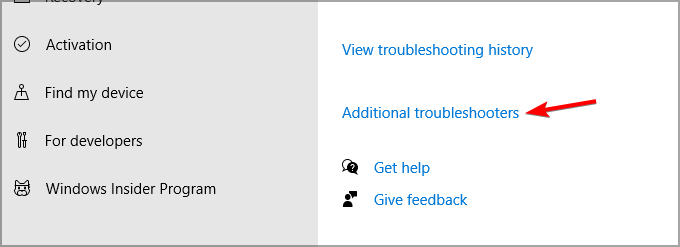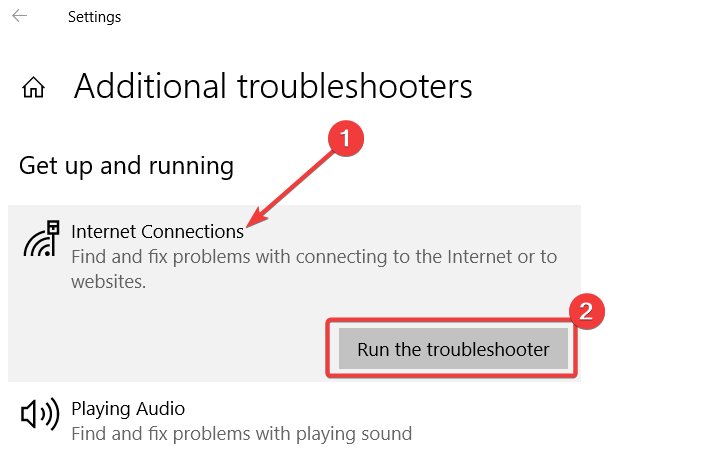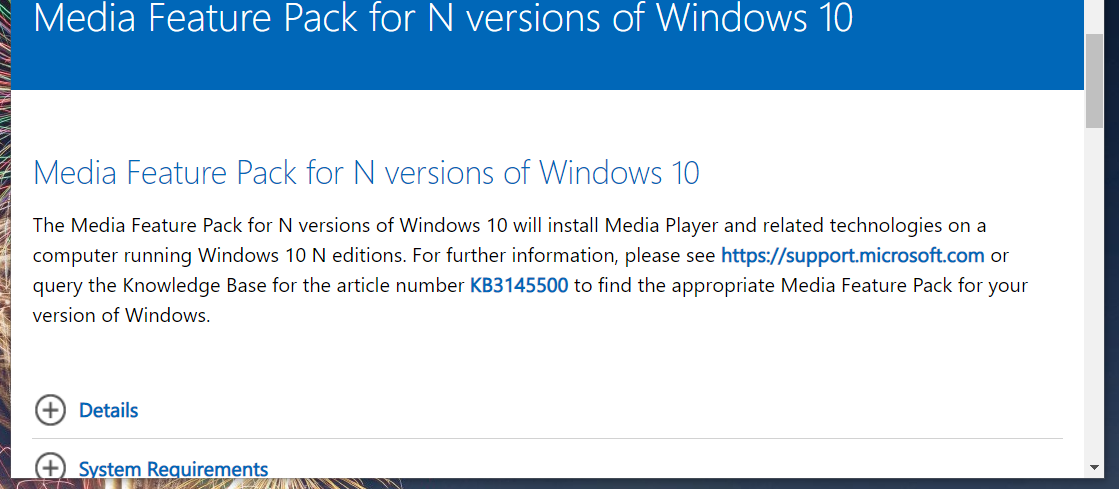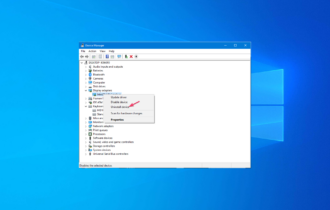6 Easy Ways to Fix Media Feature Pack Install Failed
Check you internet connection before trying the installation
6 min. read
Updated on
Read our disclosure page to find out how can you help Windows Report sustain the editorial team Read more
Key notes
- Users often can't install Windows Media Feature Pack specific to Windows 10 N and KN editions.
- To avoid problems with the Media Feature Pack, try completing the procedure as an administrator.
- Another way to fix this annoying issue is to run specialized troubleshooting software.
- If the Windows Media Feature Pack is not installing, you can always try using the command line.
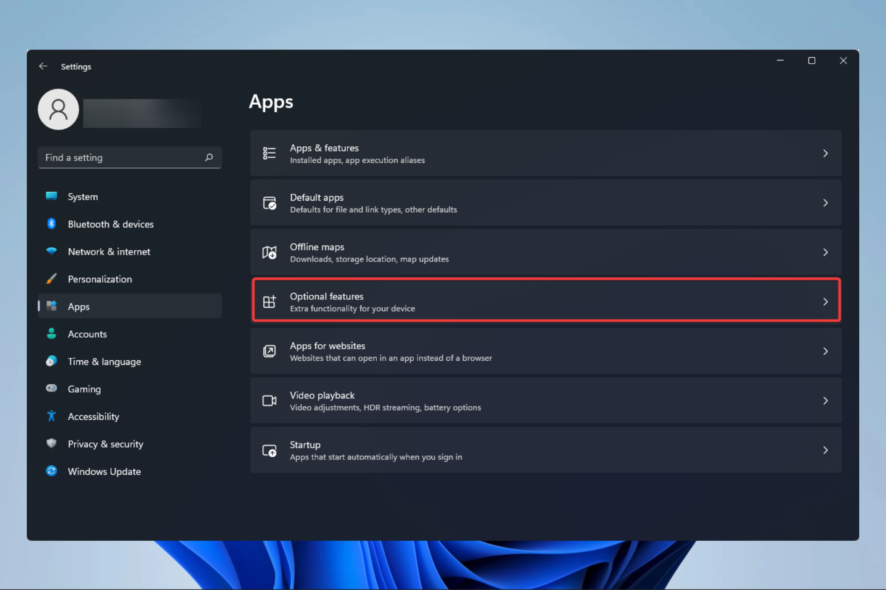
You have found this guide because your Media Feature Pack install failed; here is all you should know.
The Windows Media Feature (WMF) Pack is a Windows 10 N and KN package. Users must install the Windows Media Feature Pack to enable certain multimedia technologies available within these editions.
For some users who try to install that package, an error message pops up that says The update does not apply to your computer. Consequently, the WMF pack doesn’t install.
WMF pack installation issues often arise because users aren’t installing the package with the correct method for their Windows 10 versions.
There are now two different WMF installation methods for newer and older Windows 10 N build versions. So, some users are getting a bit confused by that.
Why can’t I install Windows Media Feature Pack on Windows 10?
- You do not have the rights – This would have been an easy guess, but to make this installation, you must be logged in as an admin.
- Using the wrong installer – You must download the correct installer package for your Windows 10 N version. Before installing the package, you must be sure about your PC’s Windows 10 N platform version.
- Bad internet connection – You should eliminate the possibility of internet connections before jumping into any complex resolutions.
These may not be the only triggers, but they are a good starting point, and regardless of the cause, you should find the solutions below helpful.
How can I fix Windows Media Feature Pack installation issues?
1. Make sure you’re signed in as an administrator user
- Press the Windows + S keyboard shortcut to open a search tool.
- Type Control Panel within the search tool, and click Control Panel in the results.
- Then click Change account type in the Control Panel.
- Select the Administrator option if your user account is a standard one.
- Press the Change Account type button.
- Restart Windows after changing your account type to sign in to your admin account.
After switching to the administrator account, check if you still can’t install Windows Media Feature Pack.
2. Install Windows Media Feature Pack via Optional features
- Open the search utility in Windows, which you can do by clicking the magnifying glass taskbar button.
- Input the keyword Apps within the search box, and click Apps & features.
- Next, click Optional features.
- Press the Add a feature button.
- Select the Media Feature Pack checkbox.
- Press the Install button.
- Restart Windows 10 after installing the Windows Media Feature Pack.
3. Run the Internet Connections troubleshooter
- First, open Settings.
- Next, open Update & Security, then click Troubleshoot in Settings.
- Click Additional troubleshooters to view a list of troubleshooters.
- Select Internet Connections and click Run the troubleshooter.
- Then go through the troubleshooter to fix any connectivity issues that might generate WMF pack installation errors.
This resolution could resolve install failed errors that might arise for some users while attempting to install the Windows Media Feature pack via Apps & features in Settings. A stable Internet connection is required to do so.
4. Download a Windows Media Feature Pack installer
- Open the Media Pack download page in your web browser.
- Select the Media Pack edition on the drop-down menu for your Windows 10 version.
- Click the Confirm button.
- Select the 64-bit Download or 32-bit Download option depending on your PC’s system architecture.
- After that, open the folder to which you downloaded the Media Pack installation file within File Explorer.
- Finally, click the Windows Media Feature package installer to proceed with the installation.
You must download the correct installer package for your Windows 10 N version. Before installing the package, you must be sure about your PC’s Windows 10 N platform version.
This is the right way to install the Windows Media Feature package for Windows 10 N versions 1903, 1809, 1803, and 1709. If you’re utilizing an older Windows 10 version, update your platform to the most recent build you can.
5. Try installing Windows Media Feature Pack via PowerShell
- Press Windows Key + X and select Windows Power Shell (Admin).
- First, input the command below and press Enter.
DISM /Online /Get-Capabilities - Identify the Windows Media Feature Pack name listed within the results.
- Then type in this command and press Enter to install the package.
DISM /Online /Add-Capability /CapabilityName:<Windows Media Feature Pack name>
You’ll need to replace <Windows Media Feature Pack name> in the above command with the actual pack name listed in the results. Then your order might look something like this:
DISM /Online /Add-Capability /CapabilityName:Media.MediaFeaturePack~~~~0.0.1.0
This is an advanced solution, but it should help if you can’t install Windows Media Feature Pack.
6. Run an efficient troubleshooter
If you still can’t install Windows Media Feature Pack even with the correct installation method for your Windows N platform, check out an efficient troubleshooter.
It’s known to help you automatically repair issues when you’re blocked from installing or removing programs, so don’t hesitate to check out the link below.
After downloading, click the MicrosoftProgram_Install_and_Uninstall.meta.diagcab file in the folder you saved it to. Click Advanced and select the Apply repairs automatically option in the troubleshooter.
Then, don’t hesitate to press the Next button to go through the troubleshooter.
⇒ Get Program Install and Uninstall troubleshooter
So, ensure you’re trying to install Windows Media Feature Pack with the correct installation method for your Windows 10 N version when you can’t complete the procedure.
How do you check if Media Feature Pack is installed?
- Open the settings app.
- Click on Apps and select Optional features.
- Scroll through the Installed features; if Media Features Pack is among the features listed, it is installed.
If the Media Feature Pack install fails, you should be able to get it properly installed using any of the solutions that we have discussed in this article.
While we have not written them in any particular order, we recommend you try the PowerShell option as a last resort since it will be the most complex for the regular Windows user.
If the problem was Media Feature Pack not installing, install error, or Media Feature Pack not showing, these solutions should come in handy.
Has any of the above methods worked for you too? Please let us know how the procedure went for you in the comments area below.



